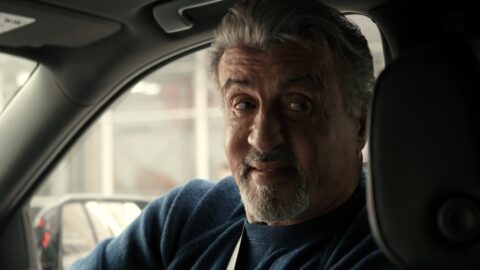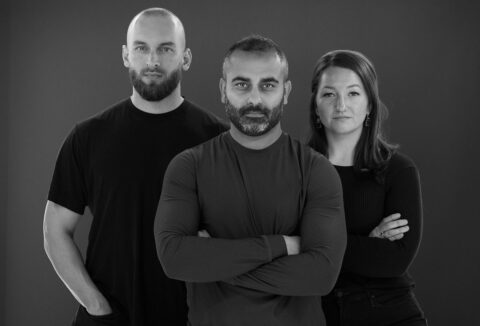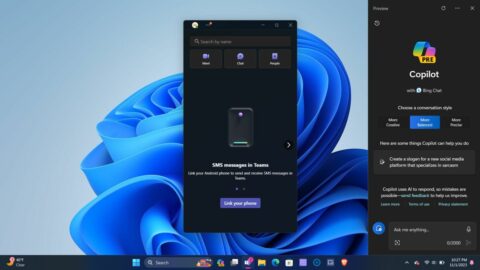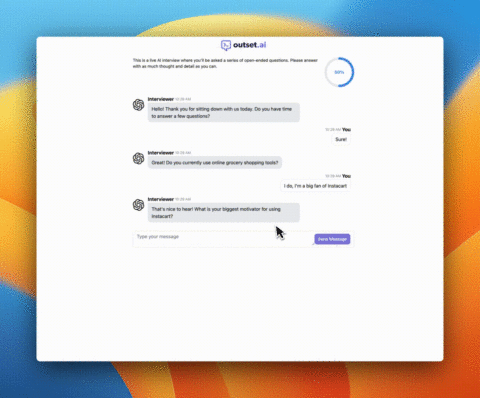Netflix’s documentary “Sly,” about Sylvester Stallone, plays like a “Rocky” sequel.

For about its first hour, Sylvester Stallone documentary Sly (directed by Thom Zimny) unfolds with surprising dexterity, journeying across the actor/filmmaker’s early life through the lens of his most iconic roles. Both its subject matter and aesthetic approach make it an effective work of introspection and artistic critique on the surface, even though it eventually loses focus. Playing at times like a missing Rocky documentary, Sly avoids the emotionally thorny material it might otherwise have been able to mine were it not so reverential towards its central star.
It’s the rare documentary feature that might have benefitted from being a longer series, but at 96 minutes in length, it establishes an adequate baseline for those in search of a quick Stallone 101. Talking heads include the actor, his brother Frank, his longtime collaborator John Herzfeld, and various heavy Hollywood hitters, from ’80s rival Arnold Schwarzenegger to Quentin Tarantino.
This patchwork of interviewees seeks to answer the question of who Sylvester Stallone is, even though the subject and the film itself seem rather convinced they have the answer. It’s a look back at a lengthy career and 77 years of life, expanding on key moments of success while brushing uglier elements of the rug. It borders on hagiographical self-promotion — Stallone is an executive producer on the movie, after all — but the way it shines a light on his creative process is entirely worthwhile.
What is Sly about?

Credit: Netflix
At its outset, Sly offers the appearance of Stallone’s life having come full circle in a meaningful way, as he packs up his lavish Malibu mansion filled with Hollywood memorabilia and plans to move back East. Before his skyrocketing success from writing and starring in Rocky in 1976, Stallone grew up in New York’s rough-and-tumble Hell’s Kitchen, an oral picture of which he paints vividly as he revisits the neighborhood’s now-pristine streets.
Spread between two cities, this narrative framework not only allows Stallone to reflect on people and places from his past, but it also lets Zimny zero in on various statues, action figures and privately commissioned lifelike busts of iconic Stallone characters, including Rocky in his victory pose, as a means to introduce the story of each fictitious avatar through their popular iconography. From there on out, Stallone dives back into tales from his childhood, from growing up with a violent and withholding father, to struggling to be seen as anything more than a talentless lug during his early career.
Stallone, whose obliquely framed, often shaky close-ups make up most of the film, carries himself with a remarkable self-awareness about his limitations, and an equally remarkable critical intellect about what the audience takes away from each of his pictures, and where some of them might have failed. By presenting Rocky Balboa and John Rambo through a psychoanalytical framework, he gives these cinematic heroes their due as more than just hulking ’80s icons; to him, they’re extensions of himself and his father, respectively. Granted, this feels like a conclusion that Sly may have been able to articulate by skillfully building towards as it explored Stallone’s history. Instead, the film leaves little room to uncover emotional mysteries, presenting them instead as thudding and obvious conclusions up front, as articulated by Stallone himself.
The effect of this narrative structure (or lack thereof) is a double-edged sword. It places Stallone’s thoughtfulness on full display, highlighting the artistic intellect he’s so often denied in the public consciousness. On paper, this framing of the actor as someone with an underrated, underappreciated sense of artistry and emotional depth reads like an exercise in further inflating a Hollywood ego, given his involvement in the film. But in execution, Sly also gives Stallone his long-overdue flowers as a creator of meaningful iconography stemming from an emotionally complicated history.
It’s also cute (and very silly) that, in its final half hour, Sly tries to frame Stallone’s character from The Expendables (whose most recent entry tanked at the box office) as on par with Rocky and Rambo in terms of impact and recognizability. (Do you remember the character’s name? Too bad; the film doesn’t bother to mention it.) This is where it begins to veer off the rails and becomes a re-writing of self-mythology too bold and fictitious to digest. But up until that point, its filmmaking proves deft enough to convince you that we don’t value Stallone’s work in crafting honest and rapturous images nearly as much as we should.
Sly‘s filmmaking tricks work wonders.

Credit: Netflix
Zimny has worked on numerous music videos and concert films (mostly for the legend Bruce Springsteen), and along with co-editor Annie Salsich, he carries forward his penchant for capturing American iconography in rhythmic ways. There’s a propulsive energy to the film’s use of archival footage and photography, which it swiftly intersperses with interviews of Stallone in the present.
At just the right moments, Sly juxtaposes real-life imagery with brief scenes and stills from Stallone’s movies, linking them emotionally and psychologically through quick cuts, as though it were portraying flashes of inspiration. The documentary is as much about a creative person as it is his creative process, and it skillfully creates the illusion of granting secret access to Stallone’s third eye in the moments it turns inward.
Divorced from the knowledge of Stallone’s involvement, Sly is practically revelatory in the way it uses Rocky and Rambo as avenues for the star to psychoanalyze himself. His interviews about his early career are lucid and candid, especially when he expresses the ways in which cinema allows him to garner the adoration he felt he lacked as a child. However, since Stallone is involved at the end of the day, Sly also creates the unavoidable specter of self-promotion.
For instance, his close-up interviews allow him to be vulnerable, but within filmmaking constraints that work against capturing the full scope of this vulnerability. The movie is quick to cut away from Stallone, rather than holding on his confessions. It bobs and weaves while filming him from up close, as though it were a boxer battling him in the ring — a flourish that works counter to the idea these interviews might be a space of comfort, allowing him to open up more completely. There is a lot to process in Sly, much of it worthwhile, but there’s also a looming sense that something is missing.
Sly doesn’t go the distance.

Credit: Netflix
A behind-the-scenes peek such as this one serves to remind viewers just how much like Rocky Balboa Stallone truly is, from his cadence and posture to the way he philosophizes and sermonizes in simple, street-smart ways. However, what separates the two is that while the Rocky movies dig deep into the character at his most flawed and susceptible, Sly is unable (or perhaps unwilling) to do the same.
While a good chunk of its runtime is spent on explaining Stallone’s creation of (and frequent return to) the Rocky and Rambo characters, it truncates the last several decades of his career. Unfortunately, Sly ends up doing the same for his personal life, and the documentary is the weaker for it. Its setups about Stallone using pop artistry as a search for meaning and personal fulfillment end up having few payoffs in the process. Its themes of recursiveness and repetition — Stallone’s frequent return to familiar characters and ideas when new ones don’t work out — simply peters out, rather than revealing any layers to him or coming to a cathartic conclusion.
Worst of all, speeding through Stallone’s life in the 2010s also means reducing the death of his son Sage, who starred alongside him in Rocky V and who has a sizable presence in the documentary via archival footage, to a mere footnote. It’s a part of his story that’s mostly glossed over despite loss becoming a key fixture of his films that would follow, but this is where Stallone’s involvement shows its hand, exposing the limits of self-reflection as a guiding credo for a documentary.
Sage’s death is, understandably, a private and painful subject, as are many of the topics which Sly glosses over, from Stallone’s divorce to his litany of legal issues. Ignoring them calls into question the movie’s own appearance as an intimate sit-down with one of Hollywood’s biggest stars. The film is a journalistic inquiry, but only on Stallone’s terms. It takes what he offers up and spins it into a finely crafted series of montages, but it never pushes further, never asks for more. It is, by nature, a film that is satisfied with its subject’s party line, all but betraying its documentarian spirit in the first place.
Beyond a point, the later stages of his life are reduced to PR talking points with enormous gaps between them. In the process, this can’t help but reframe the rest of the movie too, casting doubt on how much truth (both emotional and factual) the audience had really been made privy to during the preceding runtime. Taken at its word, there’s enough by way of useful reframing of fictitious iconography, and enough by way of the appearance of vulnerability, to make Sly an engaging watch — right up until the point that it isn’t.








